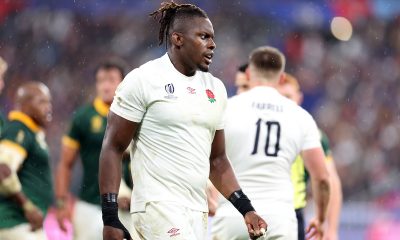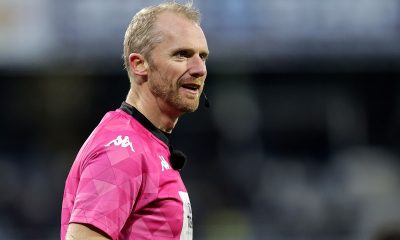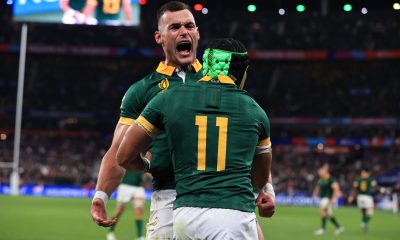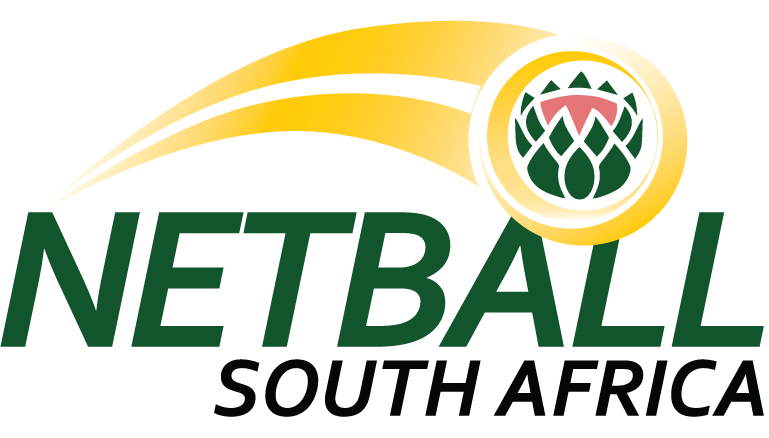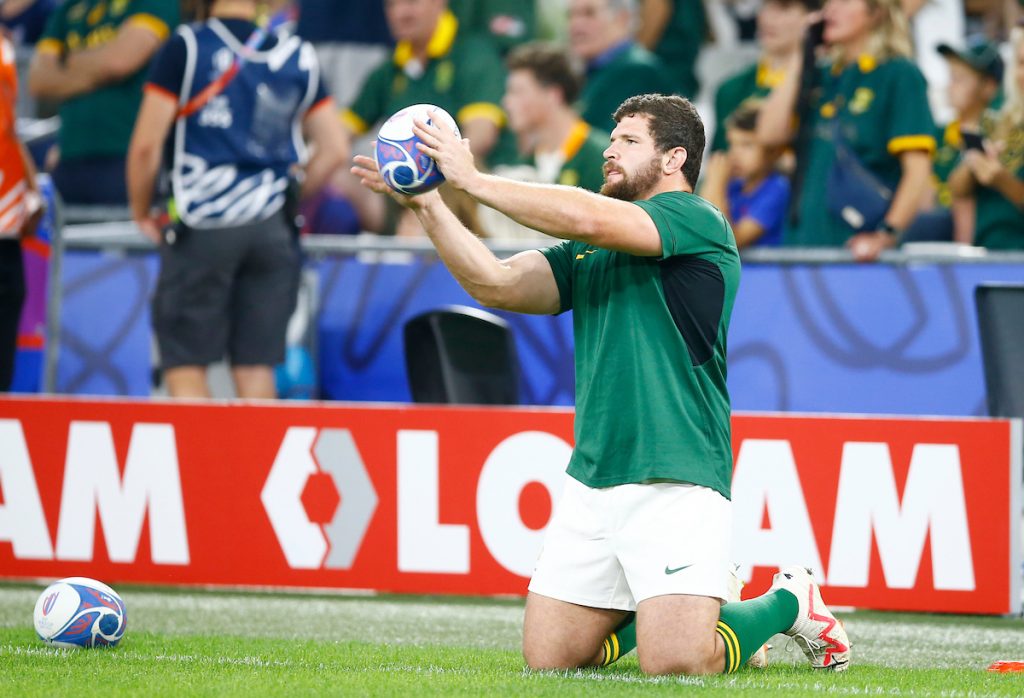
Coaches around the globe were looking to get the upper hand headed into the global showpiece and they're still hard at work while the tournament is going on with a number of out the box ideas cropping up throughout the campaign.
Will these be flash in the pan moments or are these ‘innovative innovations’ here to stay?
Flankers Flirting with Hooking
Of course the Springboks would be at the forefront of things with Rassie Erasmus and Jacques Nienabar at the helm. The former has been a rugby revolutionary since his early years with the Free State Cheetahs Currie Cup squad, while the latter has been a card carrying member of Erasmus’ Rugby Front since the two linked up in the Cheetahs days.
While they have done it with scrumhalves playing on the wing – hardly a novel idea considering former Springbok Francois Hougaard was the accidental prototype for this – the real interesting aspect of South Africa’s positional fluency has been what they have done with Deon Fourie and Marco van Staden.
When Malcolm Marx sustained a World Cup-ending injury, the Bok brains trust opted to call up fly-half Handre Pollard rather than the next hooker off the rank, Joseph Dweba, citing that Deon Fourie and Marco van Staden would fill in. While Dweba’s form had been pretty poor in his last few outings, it was a bit of a gamble having Bongi Mbonambi as the only fully fledged hooker in the squad. The gamble seems to have paid off with Deon Fourie putting in a couple of solid shifts and Marco van Staden not looking out of place in the final 20 or so minutes against Tonga.
The role of a hooker has become pretty similar to that of a hybrid backrower with breakdown skills and ball carrying skills the name of the game. With World Rugby possibly looking into lowering the number of subs on the bench post-World Cup, we could well see utility backrows/hookers become the norm.
Bench Barrage
Speaking of substitutes, the South Africans have been at the forefront of this a gain with their 7-1 split causing much ire in the rugby world but looking extremely effective in a warm-up fixture against New Zealand. While this didn’t quite come off against the Irish a few weeks later at the World Cup, it is an interesting prospect for future coaches to ponder.
Rugby players are getting bigger and stronger which has led to a decline in attrition rates for some of the men with lower numbers on their backs. The physicality and stamina needed to hit ruck after ruck against burly opponents is truly taxing on the body. And while backline players have also got bigger and are required to get through more hard graft than in the past, they still have it easier than the big men upfront.
To be able to replace almost your entire forward pack with fresh legs is certainly an interesting prospect. It should in theory allow you to be quicker to the breakdown and also allow you to dominate the physical battle late on in the piece when your opponents are tiring.
Pretty Lights
It’s hardly a new innovation with Rassie Erasmus using different coloured lights to communicate with his team as far back at 2005 when his fledgling coaching career had just got off the ground, but the former Springbok is at it again with the disco lights making an appearance in the coach’s box at this World Cup.
While the party line for the appearance of lights in the Boks game was a rather innocent one, with Jacques Nienabar stating ““If you have been pitch-side, or close [to] pitch-side [in the Vélodrome], with this dome the sound is phenomenal,” it would not come as a surprise if these make another appearance at the World Cup and beyond.
With the coaching technical boxes tucked high away in most stadiums, lights are a pretty handy tool to have. Yes, there are miked up technical teams running the touchlines but a set of lights can be seen by the players which alleviates the need for a waterboy to run on and send messages. And with referees being told to clamp down on how much time physios and water assistants spend on the field, the pretty lights could become a regularly used tool in coaching boxes across the world.
Sneak ‘Em in Late
I’m not claiming conspiracy here but surely a number of sets of coaching staff must be thinking they can now give injured big guns a bit more time to recover if they suffer an injury in the lead up to the World Cup.
The casualty rate at this year’s global showpiece has been massive with each week seeing a handful of players ruled out of the tournament through injury. While this was expected, especially considering the absurd amount of high intensity warm-up games that were played before the start of the ‘comp, some teams have dealt with it better than others with the likes of South Africa and New Zealand actually taking advantage of being able to call up players for injuries
While New Zealand have only called up Ethan Blackadder, it’s proved to be something of a masterstroke with the Crusaders man has added a fresh and hungry option to their loose trio stocks.
New Zealand have done this on a minor scale but their arch rivals South Africa have got a lot further, bringing in 2019 World Cup winners Handre Pollard and Lukhanyo Am. The former could probably have travelled with the original squad but due to a lack of game time was sent to England while the latter was nursing a knee injury. Both players are now in the mix to help the Springboks in the knock-out phase with Pollard already getting some game time against Tonga.
Perhaps coaches will now look at World Cup squads as far from finalised when the tournament actually kicks off. The South African backroom staff must have known injuries would occur and Pollard and Am were always going to be the next cabs off the rank regardless of which players sustained injuries. The late injury call ups have essentially given the ‘Boks a bigger squad for their campaign and people will have taken note of this.




